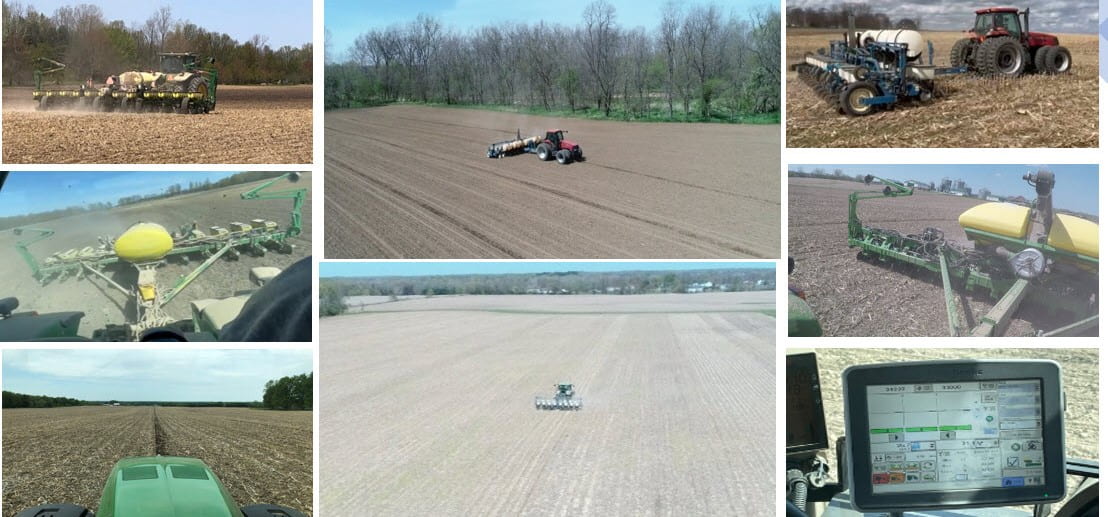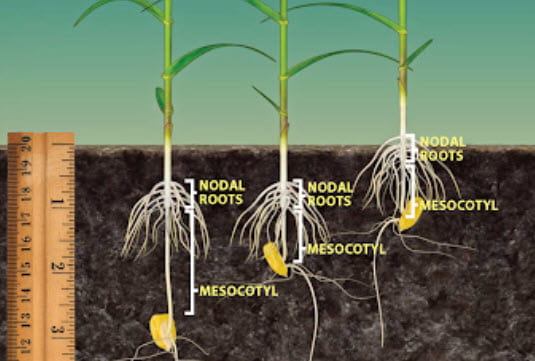Source: Alexander Lindsey, Greg LaBarge, OSU Extension
 When we examine crop emergence post-planting, two factors can impact speed of emergence – soil moisture content and soil temperatures. If soil temperatures are lower, it can take more calendar days for emergence to occur meaning rowing corn may take a little more time. In the Ohio Agronomy Guide, emergence should begin to occur after approximately 100 air GDDs.
When we examine crop emergence post-planting, two factors can impact speed of emergence – soil moisture content and soil temperatures. If soil temperatures are lower, it can take more calendar days for emergence to occur meaning rowing corn may take a little more time. In the Ohio Agronomy Guide, emergence should begin to occur after approximately 100 air GDDs.
A difference in 10 degrees in temperature can dramatically affect how quickly crops will emerge. For example, at a temperature of 60 degrees F heat unit accumulation per day would be 60 F – 50 (base temperature for growth) = 10 GDDs. If it takes 100 GDDs to start to see emergence, at this rate it would take 10 calendar days to see the crop start to emerge. If temperatures are 70 degrees F, heat unit accumulation per day would be 70 F – 50 = 20 GDDs. This would shorten the emergence window to 5 calendar days instead, resulting in more rapid emergence from planting.

Figure 1. Emerged corn on May 6, 2021 planted April 19 near London, OH.
In recent work from Nemergut et al. (2021), researchers from OSU observed emergence starting at 110 to 120 soil accumulated GDDs (base of 50 degrees F) for corn, which equated to first emergence observed in 4 or 5 days after planting. Some of the difference in calendar date for emergence (though GDD accumulation was similar) was because planting depth was changed, and the 1” planting accumulated GDDs faster than the 2” and 3” planting depths. These studies though were planted in May or early June (2019 wet spring delayed planting), and daily accumulated GDDs was higher than we might expect if planted in late April. Soil accumulated GDDs have been discussed above, and these could vary slightly compared to air accumulated GDDs (calculated using air temperatures). In the work referenced above, accumulated air GDDs in the first four days post-planting were 106-118 GDDs, slightly less than the soil accumulated GDDs.
If you want to predicate emergence on your farm, the GDD calculator found at https://mrcc.illinois.edu/U2U/gdd/ is a useful tool. It is a two-step process, first find your location on the map, then enter your planting date. The graph will display accumulated GDD’s for your location. Example output in Figure 2 shows GDD accumulation from an April 19, 2021 planting date near London, OH in Madison County. By May 6 the accumulated GDD was 138 and the emerging corn is shown in Figure 1. The GDD calculator can be used to predict growth stage throughout the growing season. This is a handy to time when scouting and management decisions should be made.

Figure 2. GDD accumulation from April 19 to May 6, 2021 near London, OH.
As the days turn cooler, don’t be surprised if the crops don’t pop out of the ground quickly due to lower soil temperatures. If emergence is still not observed after two weeks, it may be worth checking the field to see if other issues may be affecting emergence.












